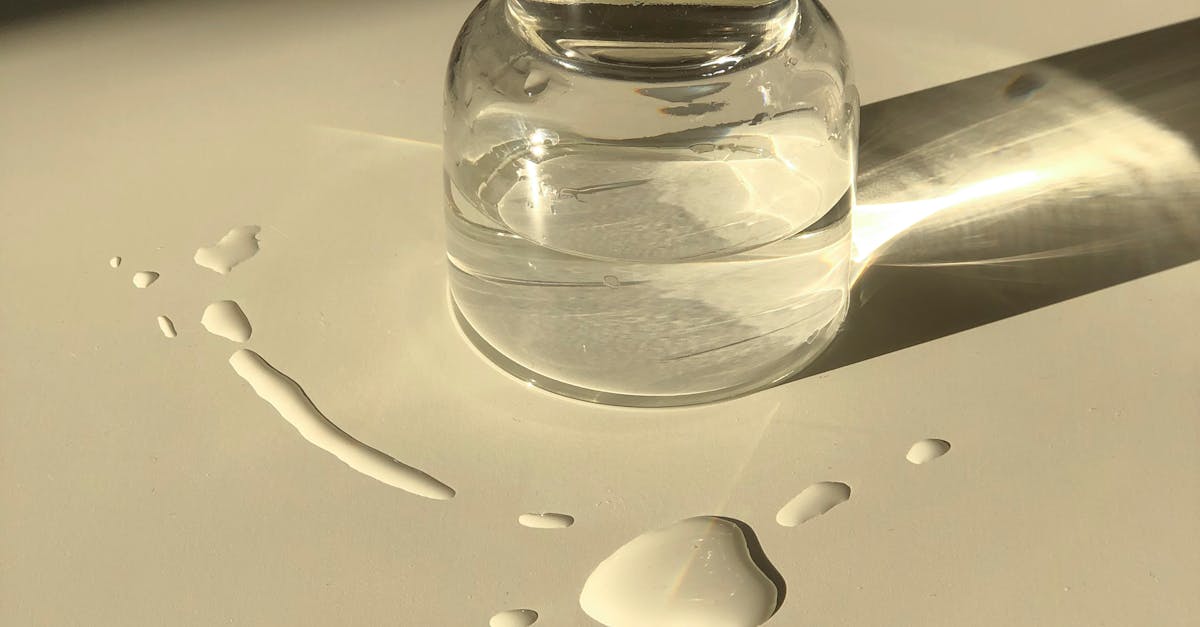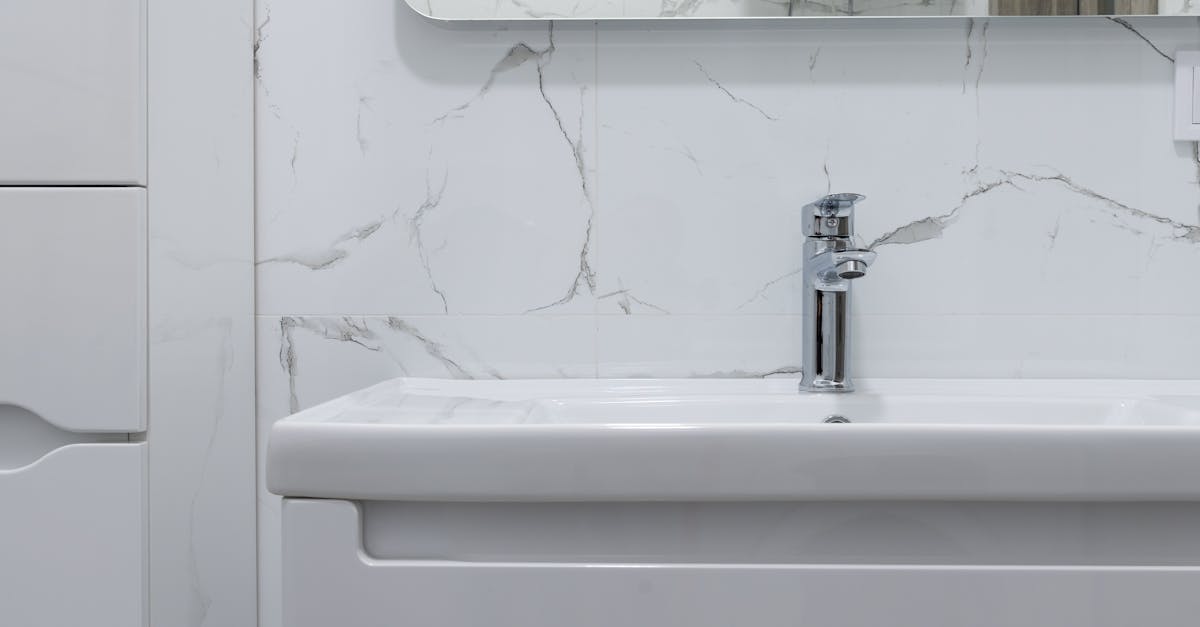
Table Of Contents
Conducting a Dye Test in Toilets
Conducting a dye test in toilets is a simple yet effective method for detecting potential hot water system leaks in your home. To begin, obtain a dye tablet specifically designed for detecting leaks in toilets. Drop the tablet into the toilet tank and wait for a few minutes without flushing. If the water in the toilet bowl changes color without flushing, it indicates a leak in the system. This color change signifies that water is seeping from the tank into the bowl due to a potential leak, highlighting the presence of a leak that should be investigated further as part of the Hot Water System Leak Detection process.
Dye tests are particularly useful in identifying silent leaks that may not be easily noticeable through traditional visual inspections. By incorporating this step into your regular maintenance routine, you can proactively address any leaks in your hot water system before they escalate into larger issues. Remember to conduct this dye test periodically to ensure early detection of leaks, thereby reducing the risk of water damage and associated repair costs in the future. Hot Water System Leak Detection through a simple dye test can save you time, money, and potential headaches in the long run.
Detecting Silent Leaks
Detecting silent leaks in a hot water system can be crucial in preventing water damage and potential costly repairs. One common method used for detecting silent leaks is examining the water meter. Start by turning off all water sources in the house, then check the water meter. If the meter is still moving, it could indicate a hidden leak in the system. Monitoring the meter for changes when no water is being used can help identify leaks that are not easily visible.
Another method for detecting silent leaks in a hot water system is through the water bill. Keep track of your water usage and compare it to previous months. A sudden increase in water consumption without a corresponding change in habits could be a sign of a leak within the hot water system. Being vigilant in monitoring water bills and consumption patterns can aid in early Hot Water System Leak Detection, potentially saving you from extensive damage and costly repairs.
Examining Walls and Ceilings for Water Stains
Examining walls and ceilings is a crucial step in the process of Hot Water System Leak Detection. Water stains on walls or ceilings can be a clear indication of a leak in the hot water system. These stains often appear as discolored patches or streaks, and they may be accompanied by a musty odor in the room. If left unaddressed, water stains can lead to structural damage and mold growth, making it essential to promptly identify and fix the source of the leak.
When inspecting walls and ceilings for water stains, it is important to note the location and size of the discoloration. Even small stains can be indicative of a larger leak hidden within the wall or ceiling cavity. Additionally, soft spots or bulging areas in the wall may signal water damage that requires immediate attention. By closely examining these surfaces, homeowners can proactively address any leaks in their hot water system before they escalate into more significant issues.
Identifying Signs of Hidden Leaks
Identifying signs of hidden leaks is crucial in ensuring the proper maintenance of your hot water system. One common indication of a potential leak is a sudden increase in your water bill without a corresponding increase in usage. If you notice unexplained spikes in your water expenses, it might be a red flag prompting you to investigate further for a possible leak within your hot water system.
Another sign to look out for in detecting hidden leaks is dampness or puddles around the hot water system. Leaks often manifest through water seepage, resulting in visible accumulation of moisture around the system. In such cases, a thorough inspection to pinpoint the source of the leak is essential in preventing further damage. Hot Water System Leak Detection is a proactive approach to safeguard your property from potential water damage caused by hidden leaks within the system.
Listening for Unusual Noises in the System
If you suspect a hot water system leak but can't find any visible signs, listening for unusual noises can help pinpoint the issue. Start by turning off all appliances and sources of water in your house to ensure that the only sound you hear is the hot water system. Listen closely near the water heater for any hissing or gurgling noises. These sounds could indicate that water is escaping through a crack or hole in the pipes. Additionally, pay attention to any loud or sudden banging noises, as this could signal a serious issue within the system. Regularly checking for such sounds as part of your routine Hot Water System Leak Detection can help catch leaks early on and prevent potential damage.
In some cases, unusual noises from a hot water system can be subtle and hard to detect. If you're experiencing difficulty or uncertainty in identifying the source of the sound, consider consulting a professional plumber for further assistance. They have the expertise and tools to conduct a thorough inspection of your hot water system and accurately diagnose any leaks or potential issues. Remember, early detection is key in preventing costly repairs and water damage, so staying proactive with your Hot Water System Leak Detection efforts is crucial for maintaining the efficiency and safety of your system.
Paying Attention to Gurgling or Hissing Sounds
Paying attention to gurgling or hissing sounds is crucial when it comes to Hot Water System Leak Detection. These noises may indicate that there is excess air trapped in the water pipes, causing disruptions in the system's functionality. Gurgling sounds are often heard when there is a blockage, while hissing noises could signify a more serious issue such as a crack or hole in the pipes.
It is essential to listen closely for these unusual sounds, especially during the hot water system's operation. Ignoring gurgling or hissing noises can lead to more significant problems down the line, potentially resulting in water damage and costly repairs. If you notice these sounds persisting or getting louder, it is advisable to seek professional help to investigate and address any potential leaks in the hot water system promptly.
FAQS
How can I tell if my hot water system is leaking?
There are several ways to check for leaks in a hot water system, such as conducting a dye test in toilets, examining walls and ceilings for water stains, listening for unusual noises in the system, and detecting silent leaks.
What is a dye test in toilets and how can it help in detecting leaks in a hot water system?
A dye test involves adding a few drops of food coloring to the toilet tank and waiting to see if the color appears in the bowl without flushing. If the color shows up, it indicates a leak in the flapper valve, which could be a sign of a leaking hot water system.
How can I detect silent leaks in my hot water system?
Silent leaks can be detected by monitoring the water meter when no water is being used in the house. If the meter continues to move, it could indicate a silent leak in the hot water system.
What are the signs of hidden leaks in a hot water system?
Signs of hidden leaks in a hot water system include water stains on walls or ceilings, mold or mildew growth, musty odors, and unexplained increases in water bills.
What should I do if I hear unusual noises like gurgling or hissing from my hot water system?
If you hear gurgling or hissing sounds coming from the hot water system, it could indicate air trapped in the pipes or a potential leak. It is important to have the system inspected by a professional plumber to determine the cause of the noise and address any leaks promptly.












































